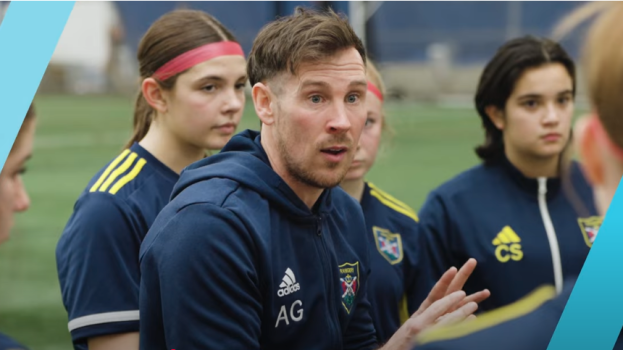
When BGC Canada – formerly the Boys and Girls Club of Canada – set its five-year strategic plan, a key goal the organization set for itself was to work on strengthening its brand awareness.
Central to that goal was taking a hard look at its 120-year-old name and deciding whether it was time to move toward something more representative of the work BGC Canada does, according to Rachael MacKenzie-Neill, VP of marketing and development for the organization.
“If you look at our organization, we support people all the way into their 20s. When you have a name like ‘Boys and Girls Club’ on the door, that doesn’t resonate or help you understand that about the organization,” explains MacKenzie-Neill. “More importantly was the question about inclusivity. It’s a gender binary name, and our clubs were consistently telling us that this is a significant issue for our youth and it doesn’t, at all, reflect the inclusive space our clubs are.”

But the organization had a quandary: it had built up significant brand equity under its old name, and MacKenzie-Neill says people across the country were anxious about “a new name and new identity.” BGC Canada is also closely tied to its counterpart in the United States, which commonly goes by BGCA. And so after much discussion, the organization opted to use an acronym of its original name that had become a common nickname for its member clubs.
“We’re a federated organization and we felt it was a path that all of our clubs could support,” she says. “A lot of them are already there. Their kids don’t say they go to a Boys and Girls Club, they say they’re going to BGC or the Club. So as usual, our young people were ten steps ahead of us.”
[iframe_vimeo video=”532342925″]
While there are no statistics to reflect the exact number of youth the gendered name might have excluded – BGC Canada has stopped counting its membership by gender, MacKenzie-Neill says – “our smallest of clubs all have groups of youth who come together through our doors, and whether it’s a formal group that they have established or not, there isn’t a club where we were not seeing this issue.”
The new branding was first hinted at last fall in “Systemic Opportunity,” a campaign that aimed to communicate the kinds of opportunities the organization provides to all communities, specifically those that may face systemic racism as an additional hurdle. Following that, and in testing since then with the youth themselves, MacKenzie-Neill says the new name has been well received.
“Our young people talked about how important it was to them that we found a way to hold on to the heritage of the clubs,” she says. “They’re so incredibly positive about where we have landed, because we’ve found a way to make sure that the thing they love is still there.”
But now that the club has announced its new name, the work begins across what is “a really large organization” to help its clubs make the transition to the new brand smoothly. Also, a new digital video introducing the new name was created by Round – which also worked on the rebrand – with support from School Editing, Grayson Music and Boombox, but more work communicating BGC’s mission planned for the months ahead, with a larger PSA campaign about its new name planned for the fall, MacKenzie-Neill says.























